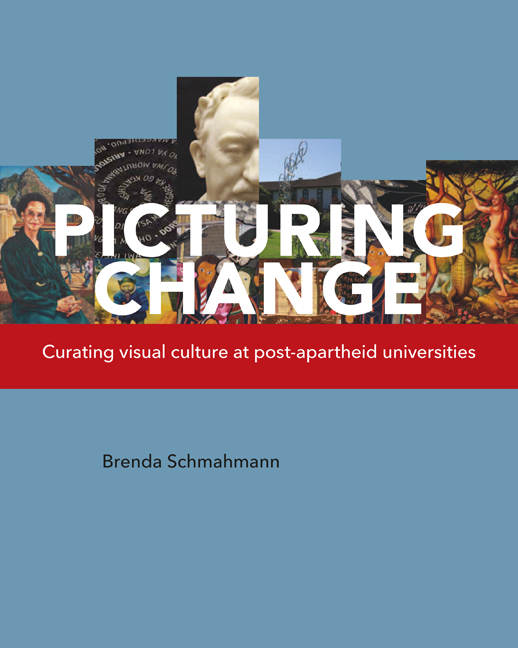1 - Negotiating works from the early twentieth century
Published online by Cambridge University Press: 21 March 2018
Summary
The 25th anniversary celebrations of the founding of Grey University College (now the University of the Free State) in Bloemfontein took place on 29 September 1929, and included the unveiling of a sculpture of Marthinus Theunis Steyn outside the institution's Main Building (Figure 9). While the decision to represent Steyn may, on one level, have been because, as one of the publications celebrating the centenary explains, ‘he had worked so diligently for an indigenous Free State university during the republican years before the Anglo-Boer War’ (Barnard 2006: 92), it was also clearly tied into Afrikaner nationalist agendas. Steyn (1857–1916) was the sixth and final president of the Orange Free State. He had actively participated in organising Boer resistance during the South African War, and was a founding member of the National Party, which was established in Bloemfontein in 1914 and which came to power in the Union of South Africa under the leadership of the staunch Afrikaner nationalist, James Barry Hertzog, in 1924. Further, the £2 500 used to pay for the monument was secured through the fundraising efforts of the Afrikaanse Studentebond (Afrikaner Student Union), an organisation with an Afrikaner nationalist agenda that broke ties with the more liberal National Union of South African Students as early as 1933.
The representation of Steyn is by Anton van Wouw who, after being commissioned to create a statue of President Kruger in 1896, emerged as a prominent sculptor of Afrikaner statesmen and heroes. Van Wouw had also created the sculpture that forms part of the Women's Monument, completed in 1913, just outside Bloemfontein – an important initiative that was, in fact, a brainchild of Steyn's. While his work on the Women's Monument made it fitting that Van Wouw be called upon to create a memorial in honour of Steyn, the choice doubtless also had much to do with his capacity to meet the requirements of the commissioning body. Representing Steyn with a sense of stoical self-righteousness and immutability, the artist also glorified the former president through the scale of the sculpture (it is about twice-life-size) and by elevating the figure using a storey-high stone pedestal.
- Type
- Chapter
- Information
- Picturing ChangeCurating visual culture at post-apartheid universities, pp. 21 - 64Publisher: Wits University PressPrint publication year: 2013



